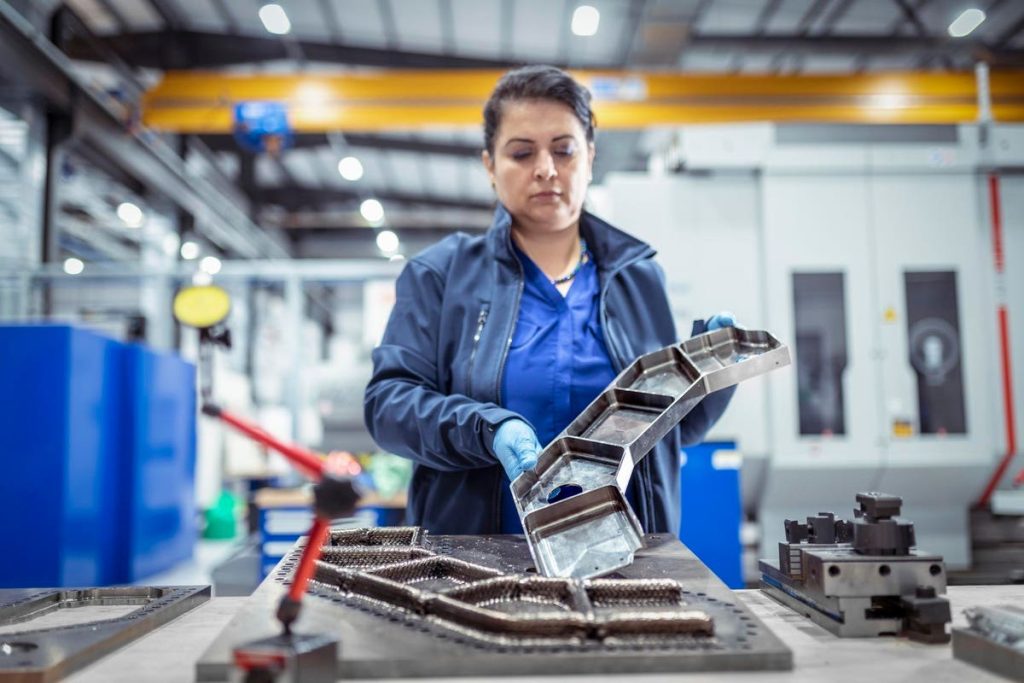Blake Teipel, Ph.D., CEO of Essentium.
Just before the onset of the Covid-19 pandemic, my company worked with a leading U.S. footwear manufacturer as they strategically assessed the role of additive manufacturing (AM) in its future trajectory. Recognizing the pivotal role of AM in footwear evolution, the company embraced the notion that AM was the crucial technology to unlock the future of shoe manufacturing.
It wasn’t enough to innovate by 3-D printing soles or weaving uppers for a better product and bigger profits. They had to rethink every step in the design and manufacturing process, combine novel technologies and find new ways to structurally engineer the shoe. Eventually, the pandemic threw their plans out the window.
But they were right. They were ready to add, replace and re-combine technologies and undergo massive internal changes to unlock competitive advantage. These were brave and bold choices.
With few exceptions, consumer goods manufacturers have hesitated over AM, despite supply chain disruption and rising costs. The need for safety and risk-aversion still reigned supreme over embracing innovation and the costly critical manufacturing layer.
And yet, other industries have already proved that AM works. So it’s not AM technology in itself that’s holding anyone back. As a recent World Economic Forum report explained, “The big hurdle in AM technology is no longer the technical feasibility but the cost-benefit ratio and finding a suitable business model.”
The WEF report listed widespread organizational barriers to AM innovation, including the inability to identify value-adding applications, the lack of business models tailored to AM and the absence of accurate cost-calculation models.
Where Additive Manufacturing Stands Today
It’s important to stress that AM isn’t an answer to anything alone. We are still decades away from a Star Trek replicator-like technology that can print a functional, multi-material, multi-component solution out of thin air.
AM can and will supplant many classical manufacturing processes and techniques, but the reality is that it is one component of a system that almost invariably needs re-engineering so the constituent components within a consumer device can function holistically together properly, from end to end. Putting that into practice requires a clear, broad vision, industrial courage and believers at every level.
“Companies must avoid incrementalism and instead assess and target the full potential across the short term, the midterm and the long term,” McKinsey wrote in 2021. “Consumer-goods companies must embrace a new breed of transformation to build a sustainable competitive advantage in the post-pandemic world.”
“To successfully implement any 3-D-printing technology, there must be a balance between technical and business sides,” the Society of Manufacturing Engineers said in its 2023 AM Industry Report. It rightly warned, for example, that neglecting design for AM, which consolidates parts and eliminates manufacturing processes, “can make it impossible to build a strong business case.”
Fighting a battle on costs—showing where the investment in AM will pay off—goes beyond the spreadsheet. As McKinsey noted in the article cited above, “Cost-cutting can no longer be the main compass for change. Instead, transformations must take a truly holistic perspective (across functions, geographies, and levers) to unlock new opportunities.”
Printing technology and material science are already there. What’s needed is the economic conviction and time horizon to support the underpinning ability to manage change, which means big changes like moving a factory or figuring out a new direct-to-customer pathway enabled in whole or part by AM.
Take, for example, the production and sale of safety razors, a business as old as the Statue of Liberty. The whole-process manufacturing innovation came bundled with e-commerce and marketing genius. A handful of companies incentivized consumer change by making razors and handles, putting them in attractive packaging and, initially, bypassing retail by shipping directly to the consumer while achieving competitive pricing.
It worked because when disrupting a market, winning means seeing beyond the cost of individual parts or the expense embedded at the start of a new process to the rewards to be had. And they lie with the increasingly demanding consumer.
What’s Next For Additive Manufacturing
While it will take time for AM to create products that don’t already exist, AM can be deployed now to improve the customer experience. This is tough when consumers already get products they’re happy with. Top brands are great at providing beautiful products replete with reel-worthy unboxing experiences and present them so well that the consumer wants to retain the packaging long after the device is first received to remember the initial opening experience with fondness and re-conjure just a portion of the initial giddy excitement on some otherwise dreary day.
AM offers consumer goods manufacturers two layers of opportunity—dual pathways to success. The first is design and manufacturing, which determine the quality of the product. The second is reaching the customer in new ways that build value, adding to the experience through greater personalization and increased convenience or choice.
“AM adoption is typically a highly capital-intensive process since it requires investment in machines, education, research and development,” the WEF notes in the article cited above. “AM applications should therefore be primarily motivated by a valid customer need and a convincing business case to create a self-sustaining adoption environment.”
We must keep pushing. Adoption enables the change we wish to see in the world. The more the world prints its components and solutions—the better off the world is. Here’s to hoping the next wave of industrially courageous manufacturers embrace the future state of cutting-edge products only enabled by end-to-end adoption of AM. Happy printing.
Forbes Technology Council is an invitation-only community for world-class CIOs, CTOs and technology executives. Do I qualify?
Read the full article here










